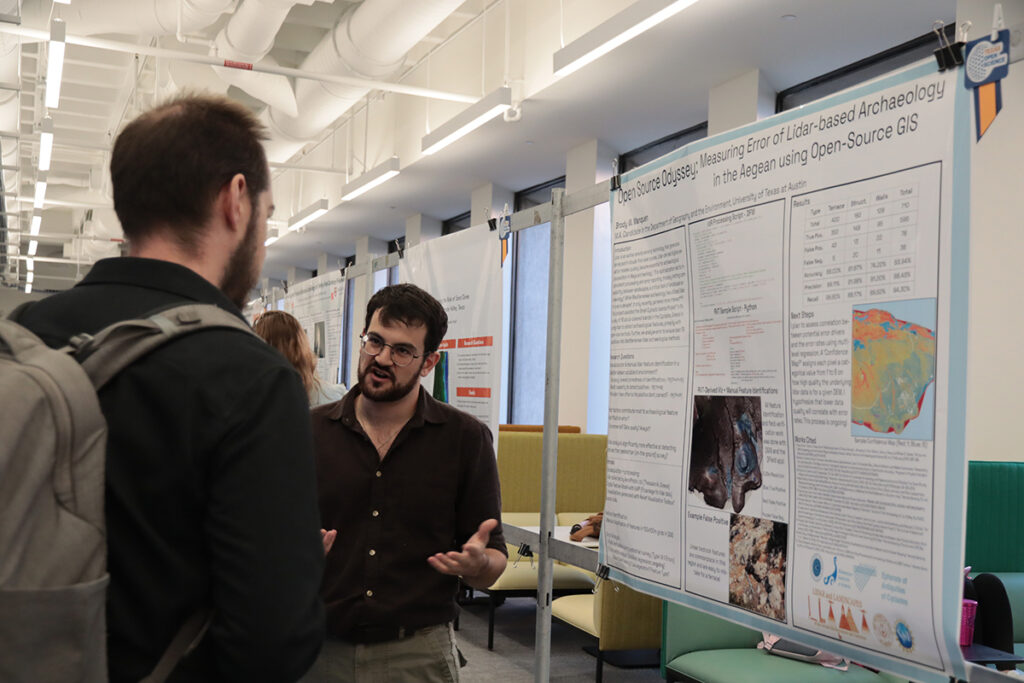On November 15th, members of the campus community gathered in the new Scholars Lab in the Perry-Castañeda Library and on Zoom to celebrate UT GIS Day 2023 through a series of hybrid-format events which highlighted the diverse ways in which geographic information system (GIS) software and related geospatial technologies are being utilized in research and learning here at UT Austin. This year’s event marked five consecutive years of UT GIS Day and set a new record for attendance and participation. Our UT GIS Day 2023 theme of “Celebrating Open Geospatial Science” was woven throughout the day’s events and allowed us to explore the work being done in this area here at UT.
The day’s events began at noon with a drone demonstration from Markus Hogue (UT Campus Geospatial Assets) on the PCL Plaza and continued into the evening. In line with this year’s theme, invited experts Caitlin Carter (HELIOS) and Kevin Worthington (Colorado State University) highlighted the significance of open scholarship and reproducibility in geospatial science.










The UT Libraries and UT Open Source Program Office collaboratively organized a workshop focused on reproducible geospatial workflows using open source software. A panel of GIS professionals from the local community provided insight into the diversity of career paths that are open to students interested in working with geographic information systems. For the first time, UT GIS Day included a poster competition that featured awards for the top three student participants (1st – Brody Manquen, 2nd – Andrew Wang, 3rd – Chris Ploetz) in recognition of their exemplary poster design and Open Science Recognition Awards for all student participants who highlighted open geospatial science practices. Following the competition, the 2023 UT Libraries Map & Geospatial Collections Explorer Fellowship was awarded to our student and faculty recipients—Ethan Plevak and Dr. Elizabeth Catlos. Our keynote speaker, Dr. Qiusheng Wu (University of Tennessee) capped off our series of events with a fascinating talk that highlighted the power of open geospatial data and open source remote sensing software.
Our 2023 UT GIS Day was truly a memorable celebration of all things geospatial at UT Austin and would not have been possible without the contributions of presenters, organizers, and attendees. The collaboration between the UT Libraries, UT Campus Geospatial Assets, UT Open Source Program Office, and Department of Geography and the Environment resulted in a diverse series of events that showcased the innovative applications of geospatial technologies here on campus and beyond. Hopefully the learning and networking opportunities provided by this year’s UT GIS Day events will contribute additional momentum to open geospatial science and GIS driven research here at UT Austin.

















 The Perry-Castañeda Library Map Collection gets a lot of use.
The Perry-Castañeda Library Map Collection gets a lot of use.